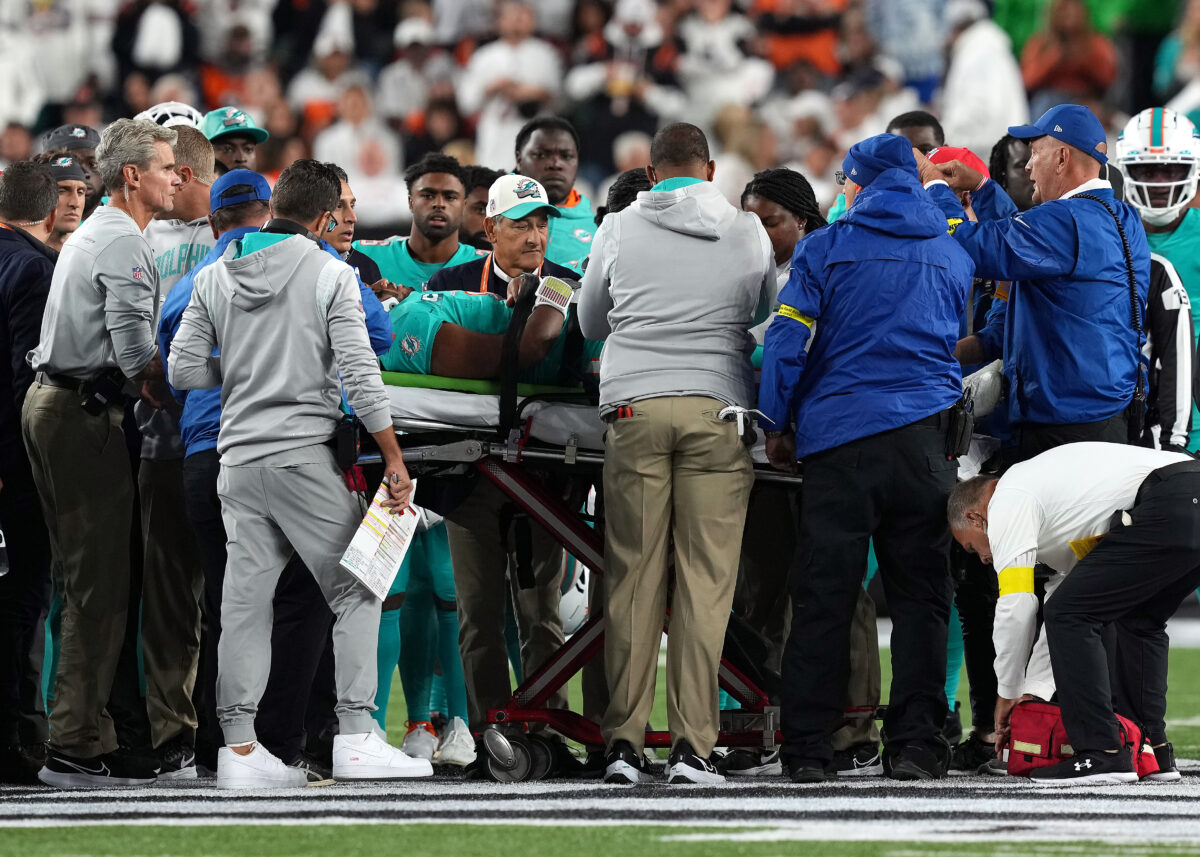With 5:57 left in the first half of the Thursday Night Football contest between the Miami Dolphins and the Cincinnati Bengals, Dolphins quarterback Tua Tagovailoa was sacked and suffered what looked to be severe head and nek injuries. This happened just four days after Tagovailoa was hit by Buffalo Bills linebacker Matt Milano in Miami’s Sunday win over the Buffalo Bills. It looked a lot like a head injury when Tagovailoa got up woozy and shaking his head, but the team went out of its way to say that Tagovailoa had suffered a back injury. The injury against the Bills happened in the first half; Tagovailoa returned to play in the second half.
After the game, the NFLPA said that it intended to investigate the Dolphins’ handling of Tagovailoa’s injury
A lot of people are wondering about the positioning of Tagovailoa’s hands after the injury in the Bengals game — his hands were splayed above his head after his head hit the ground.

This is likely what is known as a “fencing response position,” which is “an overt indicator of injury force magnitude and midbrain localization to aid in injury identification and classification,” according to the National Library of Medicine. This time, the Dolphins released a statement during the game that Tagovailoa had suffered head and neck injuries and was being taken to the University of Cincinnati Hospital. Reports indicated that Tagovailoa had movement in all his extremities.
Sadly, Tagovailoa would not be the first NFL player to suffer head trauma on the field and go into a fencing response position. We will not post the videos here, but it happened to Pittsburgh Steelers quarterback Mason Rudolph against the Baltimore Ravens in 2019, and it happened to Los Angeles Chargers tight end Donald Parham against the Kansas City Chiefs last season.
More on the fencing response position from Healthline:
The name comes from the similarity to asymmetrical tonic neck reflex (ATNR), also referred to as fencing reflex, which occurs in newborns.
This is when newborn babies position themselves with one arm flexed and the other extended with their head turned toward the extended arm like a trained fencing athlete. This reflex usually stops after the baby reaches about 4 months old.
This reaction occurs after injury because it’s thought that if a blow impacts the brainstem, it will momentarily reactivate the ATNR.
Doctors use a number of indicators — such as the 15-point Glasgow coma scale — when assessing the severity of TBI [Traumatic Brain Injury]. For a variety of reasons, including the fact that concussions can’t be seen on MRI or CT scans, medical professionals are looking for more indicators to make diagnosis more accurate.
Whether or not fencing response was seen by witnesses may become part of that assessment process. If the fencing response is seen after an injury, it could be that it was likely worse than one where no response occurred, since the fencing response is thought to involve the brainstem.
